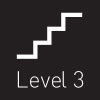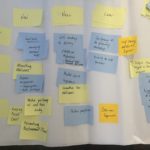This month’s topic was managing product managers.
Often Product Anonymous events cover topics to help make you be a better product manager – like roadmaps – but we also need to focus on the the people skills. This month we asked a couple managers of product managers what they do to ensure high performance & keep their people motivated.
Layla Foord has over 20 years experience managing teams of product people. Fiona Moreton has over 15 years as a team manager with background in customer management & sales teams and has been managing product managers for the last 3 years.
#prodanon introducing the speakers. pic.twitter.com/Hwq3LI6jaf
— nickcoster (@nickcoster) June 16, 2016
How do you structure coaching and mentoring of your people?
Fiona is a real believer in the 70:20:10 management rule (as is PageUp). This focuses very much on on-the-job training. She is involved in providing personal feedback to her people which is very individualised feedback. It needs to take into account where each person is on their journey plus experience in product management.
Layla has managed many people and concurred with what Fiona described as on-the-job observation and personal tailoring of the approach.
She also talked about understanding where your people are on the spectrum – product management is a range of skills and needs. You need to understand each person’s super powers and ensure they are using and showcasing them. Layla described how sometimes her people didn’t want to use their super powers as they saw them as skills to avoid using – but she finds this leads to dissatisfaction in the person and discontentment at work.
“It’s about behaviours & proof points” @product_anon @Foordstaress
— Julia (@JuliaBearzatto) June 16, 2016
How do you guide your product people through the pull of the technical owner role?
Fiona’s take: PageUp has just decided to rearrange things. They split the roles and will have product owners and product strategy managers. This allows for the clear division of roles but of course they will need to work through how to share and communicate between the two groups.
Layla: talked about it being a range that they are still figuring out. It will keep changing. Right now she guides people towards their strengths. If their strength is working deeply with the tech team, that would be supported. Layla did make a point about the danger of micro-managing the team… if the product person isn’t providing the necessary information for the team to make decisions on their own, that product person is a control freak. You are there to provide a vision, not dictate a back-log.
Layla encourages her people to drop the ego. If you’re only interested in getting your ideas onto the product then you are doomed! Every product manager needs to be ready to accept ideas that come from anywhere and ensure general principles of the product are understood so everyone can contribute.
What does a development path look like?
Layla: Some people get very interested in the detail (technical or otherwise) and she thinks it’s important to remind them to look up (she did quite a good animation of lifting up her chin! 🙂 You need to see beyond the immediate moment (the firefighting).
When they are able or willing to look to that second horizon then are ready to move to more senior roles and the most senior are casting out to horizon three.
Fiona: Knowing when someone is ready for the next step is a combination of time in the role, aptitude and attitude. The way in which they engage with other stakeholders in the business -beyond their own team – are other signs they are ready for those next steps. And there are other ways to keep a person challenged than just the title, it can be about expanding the responsibility of work they are looking after.
How do you decide to carve up product responsibility (say if you have a portfolio of products?)
Fiona had to leave before these last 2 questions.
Layla is a big believer in ensuring the product person has an end to end view. Figuring out how to slice and dice is still a challenging question depending on the product and organisation but she would always attempt to ensure the view is breadth rather than depth.
Should product people be assessed on hard metrics? Aligned with company metrics?
Layla: Honestly? no. Your strength of skills is in areas that are subjective and can’t be measured.
One comment from the audience on this question said it’s tough to align on the company metrics as often they are too short-sighted. A product person is making efforts or work that won’t have an impact on company metrics until 2 years or more down the track.
Thank you to Layla and Fiona for their forthrightness, honesty and humour for this session.
Thanks again to PageUp people for hosting us! Great space and support for our event.
#prodanon – what does a ‘product manager manager’ look like? Thanks @PageUpPeople for hosting! pic.twitter.com/DcWU90Zack
— Peter Lam (@peter8lam) June 16, 2016
Join us for our two events in July – a prep session for speakers for ProductCamp and for a chat about financial skills in product mgmt.


 Stax shines a light on everything enterprises need to know to be confident in cloud by taking out the guesswork and providing visibility, automated risk assessments, compliance and maturity, and recommendations for achieving best practice.
Stax shines a light on everything enterprises need to know to be confident in cloud by taking out the guesswork and providing visibility, automated risk assessments, compliance and maturity, and recommendations for achieving best practice.





